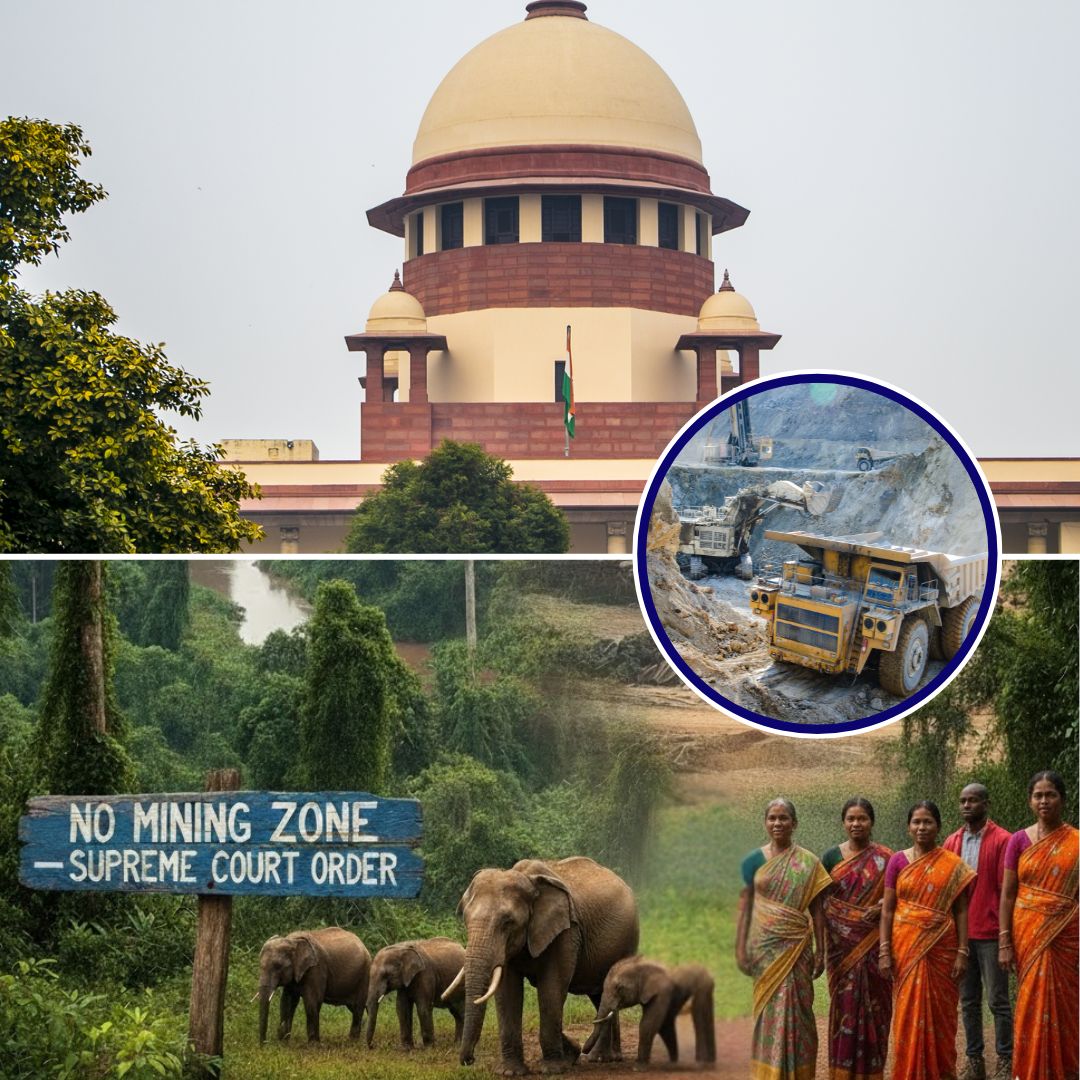On November 13, 2025, the Supreme Court of India delivered a landmark ruling banning all mining activities within one kilometre of national parks and wildlife sanctuaries across the country. The judgment was passed by a two-judge bench comprising Chief Justice of India B R Gavai and Justice K Vinod Chandran.
The court reiterated that mining within these ecologically sensitive zones is “hazardous for wildlife and ecological balance,” and directed that such activities must cease immediately. The order extends a previous restriction that had been applied only to Goa and now applies uniformly across India, marking a significant step in the nation’s environmental protection efforts.
The Rationale Behind the Court’s Decision
The Supreme Court’s order was grounded in the increasing threats posed by mining, including habitat fragmentation, pollution, noise, and dust disturbance, which jeopardise wildlife and ecological systems.
The ruling extends previous directives issued in 2023, which initially focused on Goa, and now applies across India. The court also insists that states must revisit and revise their boundaries, declaring that no mining lease should exist within the one-kilometre buffer zone from any national park or sanctuary. This effort underscores India’s commitment to environmental preservation and the protection of critical habitats for species like tigers, elephants, and rhinos.
Focus on the Saranda Forests and Jharkhand
One of the pivotal cases that led to this historic decision involved the Saranda forests in Jharkhand. The court directed the Jharkhand government to notify the Saranda and Sasangdaburu forests as wildlife sanctuaries, covering 126 compartments initially declared in 1968. The court also asked for safeguards to ensure tribal and local community rights are protected under the Forest Rights Act while safeguarding ecological corridors.
The Saranda region, regarded as one of the most pristine Sal forests globally, is home to diverse species, including elephants, bison, and exotic bird species. Activists and conservationists have long campaigned against mining projects that threaten these ecosystems, and the court’s order serves as a precedent for protecting other sensitive regions nationwide.
Impact on Mining and Industry
The court’s directive impacts existing mining leases and projects within the prohibited zone. States are required to review and, if necessary, cancel or amend the leases that fall within the buffer space. While some industry stakeholders express concern about economic impacts, the court emphasised that ecological concerns should take precedence over short-term gains.
This ruling also underscores the need for sustainable development strategies, including the rehabilitation of affected areas and providing alternative livelihoods to communities dependent on mining. The court’s pronouncement aims to curb illegal mining practices, which are often associated with environmental degradation and illegal poaching.
Significance for Environmental and Community Rights
Apart from protecting wildlife, the Supreme Court reiterated its commitment to the rights of local and indigenous communities living in forest regions. The order guarantees that tribal rights under the Forest Rights Act remain intact and directs the government to ensure these rights are protected while declaring new sanctuaries.
The decision marks a significant progression in India’s environmental jurisprudence, reinforcing the judiciary’s supervisory role over ecological issues and resource management. It also signals a clear message to industries and states about the importance of safeguarding India’s ecological heritage for future generations, reaffirming that ecological health and community welfare are mutually reinforcing goals.
The Logical Indian’s Perspective
This landmark ruling is not just a legal victory; it is a moral compass for India’s development journey. The Supreme Court’s decision reminds us that progress cannot be measured solely by economic growth, but also by how well we protect our natural heritage and the rights of those who live in harmony with it.
The Logical Indian stands firmly with the belief that sustainable development must prioritise ecological balance, community welfare, and the long-term health of our planet. As we celebrate this win for nature, let us also reflect on how each of us can contribute to a future where forests, rivers, and wildlife thrive alongside human progress.











